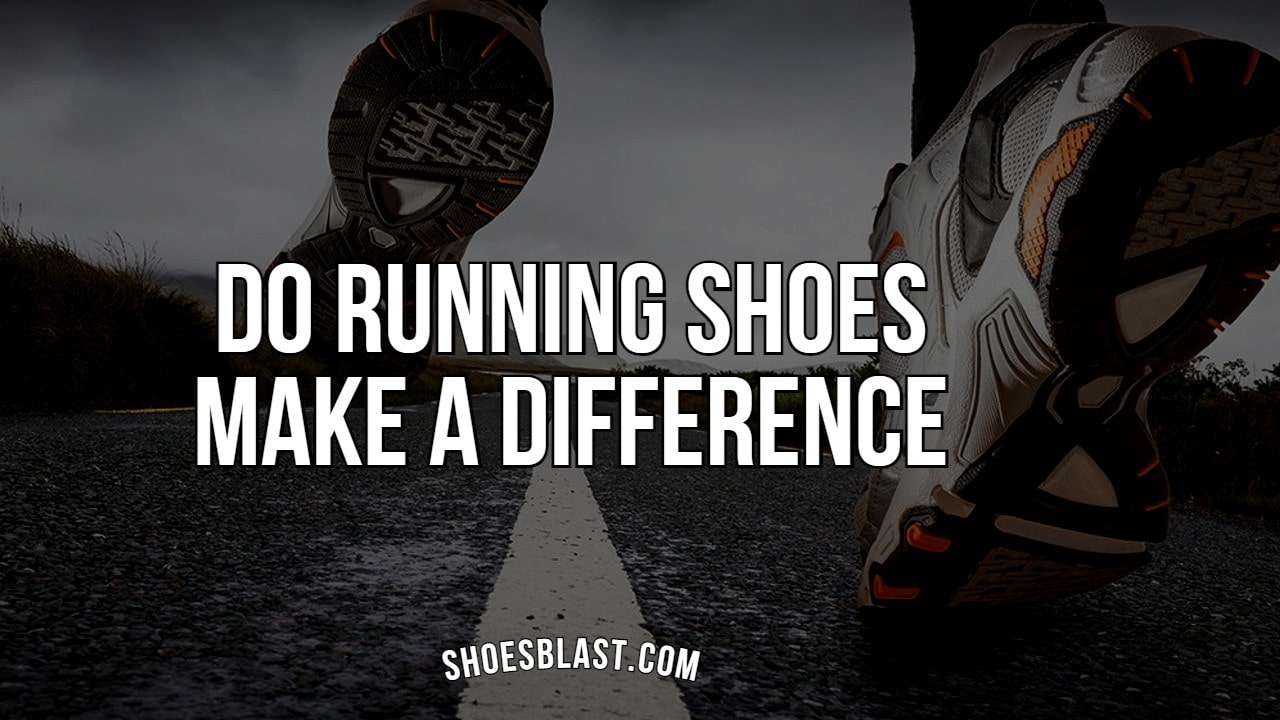Do Running Shoes make a Difference? This question can be asked by two types of runners. One who’s just started running and thinking if they are worth investing in. Also, the same question can be searched when comparing running with shoes vs barefoot.
Many runners end up running barefoot (it can be minimalist or shoeless) as modern shoes give them injuries between the gap of 2-4 months. It can be a never-ending debate as it varies from runner to runner. One size doesn’t fit all.
What works with most people is choosing a running shoe (online or in-store). In the beginning, we’ll suggest you get your first shoes from the local stores. Most stores have treadmills in them so you’ll be able actually to wear the shoes rather than reading verdicts online if buying online.
Another tip before purchasing your first shoe is not to spend too much straight on your first pair. The first pair should be an average running shoe. The price can vary from $25 USD to even $300+.
We personally recommend ASICS gel content 7 to be your first shoe as it has max features and a budget of around 50 USD. But, to check more options check our dedicated article on the best shoe for beginner runners.
Benefits of Wearing Running Shoes
Simple straight and easy. Running shoes are intended for running only. Manufacturers understand the science of running and add required features accordingly. These features focus on keeping the body free from pain after running which avoids running-related injuries.
Whereas, Other shoes (training shoes) offer lateral support that is good enough for gym-related activities. They have different outsole, midsole, upper, and even different designs. both of them are good at what they are designed for and not for the opposite.
Key Differences Between Running Shoes and Other Shoes
1- Running Shoes Have More Cushioning
Just like our parcels are bubble wrapped so they do not damage in the process. Similarly, Running shoes have more amount of cushioning to keep our body free from pain. More cushioning in the running shoe means a better ability to absorb shocks.
Each time our foot make the contact with the ground it generates a ground reaction force. The impact of running then further divides to the whole body but especially in the lower body.
To keep the body pain-free while running manufacturers added cushioning in the shoes so they can absorb the impact of running inside the shoes.
Cushioning doesn’t only help with shock absorption but offers great comfort as well. The average weight of a running shoe weighs around 250 to 270 grams. but, if its have more cushioning it can be heavy up to 300g.
2. Higher heel to toe drop
The heel-to-toe drop is the difference in height between the heel and the toes. Running shoes typically have higher heels for absorbing shocks better from the ground. The heel-to-toe drop measures in mm. and, it can be from vary from 0 to 12mm drop.
The 0mm running shoes are considered as a zero drop shoe or a flat shoe. It’ll be a straight line from head to toe and no gradient. 1-4mm drop shoes are considered low drop or minimal shoes. 4-8mm is considered as a medium drop shoe whereas, above 8mm is considered as the higher drop shoe.
Lower drop running shoes are great for the forefoot and the midfoot strikers where the front part of the foot meets the ground first. and, for heel strikers, a higher drop is an option.
These detailed changes in the millimeters can make a huge impact on overall running. A lower drop help with upper leg running-related injuries such as knee pain, shin splints, ITBS. whereas, the higher drop is recommended with lower leg injuries such as Achilles tendonitis, plantar fasciitis.
3. Firm yet responsive midsoles
One thing that Running shoes that set apart from other shoes are their midsole. It’s a sandwich between upper and outsole. It is a part of the shoe that is responsible for the comfort and absorbing shocks while running.
Not all running shoes have some kind of midsole but it depends on your pace, running distance, and body weight as well.
For beginners, A medium-soft midsole is perfect! It is so that runners can play with variations. A midsole that is a good balance between rigid and soft is ideal for running on fast and even at slow paces.
4. Running Shoes are shock absorbers.
Shock absorbing, energy return, impact damping are similar names for different things. But, they all did the same job.
It is to minimize the impact of footfall (when the foot meets the ground). Each time foot makes the contract with the ground it generates the energy that reflects on the joints.
Shock absorption in the running gets initial when running on the harder surfaces. More complex surfaces don’t absorb many shocks compared to grass and running tracks. and, it is where this feature gets initial.
To make running comfortable, running shoes have built-in features that can absorb the shocks within the shoes before it travels to the whole body.
Besides midsoles, even outsole and gel patch in the running shoes also contribute to the same task.
The running shoes have a specific type of outsole that minimizes the pressure of running and the gel patch. Most of the running shoes have the GEL series. It is a silicon-based gel in the shoes that is responsible for absorbing shocks.
5. Running Shoes are Light in Weight
The weight of the running shoes depends upon various factors but mostly on cushioning. The more cushioning in the running shoes have, the heavier it’ll be.
The average weight of running shoes falls in the category of 250g. and, max it goes to 350 grams.
Runners who wish to run at a slower pace prefer maximum cushioning for better comfort. and, one who needs sprinting shoes prefers light cushioning shoes as they are light in weight. See if lightweight running shoes make you faster.
Compared to other shoes like training shoes and basketball shoes running shoes are light in weight so the body doesn’t have to carry a ton of load with each step.

I’m Shafey. An avid runner since 2012. I am one of few people who like doing cardio instead of muscle building. I love spending time on treadmills, tracks, pavements, or any surface rather than exercising with dumbles.
With all those years of experience and spending the whole night reading blogs and researching different concepts of running. Learned a lot about new tips and tricks. In those years tried different running shoes (from $ to $$$). I got a great knowledge that can be shared with others. I may not be a professional running coach but YES an experienced runner who can guide right to beginners.✌️✌️



